Children’s Eye Health
How Nutrition Supports Myopia Management
FSDAVCFEBFEVSDDVFSD
FSDAVCFEBFEVSDDVFSD
FSDAVCFEBFEVSDDVFSD
Diet and Vision Development
Proper nutrition plays an important role in childhood vision, especially for children managing myopia. Myopia, or nearsightedness, happens when the eye grows too long, causing distant objects to appear blurry. While professional treatments like orthokeratology and MiSight® lenses focus on reshaping the eye and improving focus, nutrition supports healthy eye growth from the start.
Key nutrients such as DHA, lutein, and zeaxanthin are vital for retinal development and overall visual function. Including these nutrients in a child’s diet helps protect the eyes from inflammation and oxidative stress, which can accelerate myopia progression. When combined with professional treatments, a nutritious diet supports a comprehensive approach to managing your child’s eyesight effectively.
Proper nutrition plays an important role in childhood vision, especially for children managing myopia . Myopia, or nearsightedness, happens when the eye grows too long, causing distant objects to appear blurry. While professional treatments like orthokeratology and MiSight® lenses focus on reshaping the eye and improving focus, nutrition supports healthy eye growth from the start.

Key nutrients such as DHA, lutein, and zeaxanthin are vital for retinal development and overall visual function. Including these nutrients in a child’s diet helps protect the eyes from inflammation and oxidative stress, which can accelerate myopia progression. When combined with professional treatments, a nutritious diet supports a comprehensive approach to managing your child’s eyesight effectively.

Top Nutrients for Eye Health
Among essential nutrients for eye health, DHA (docosahexaenoic acid) is particularly important for eye development. This omega-3 fatty acid helps build healthy retinal tissue and enhances communication between the brain and eyes, which is crucial for clear vision. DHA is naturally found in fatty fish like salmon, sardines, and tuna. For those following plant-based diets, algae oil supplements provide a good alternative source of DHA.
Lutein is another key nutrient found in dark leafy greens such as spinach, kale, and collard greens. Along with zeaxanthin, lutein protects the eyes by filtering harmful blue light and supporting the retina’s long-term health. These nutrients accumulate in the macula, the part of the eye responsible for sharp central vision, helping to maintain clarity over time.
While supplements can help fill nutritional gaps, they should be taken cautiously. It’s important for parents to consult a pediatric optometrist or family physician to determine appropriate dosages, since excessive intake isn’t necessarily beneficial. Ideally, children should obtain these nutrients through a balanced diet that includes fruits, whole grains, proteins, and plenty of vegetables to support overall eye health and proper vision development.
The Role of Outdoor Time

Spending time outdoors is linked to slower myopia progression in children. Exposure to natural sunlight helps regulate dopamine release in the retina, which is believed to reduce the eye’s tendency to elongate—a key factor in developing myopia. This regulation supports healthier eye growth and may slow the worsening of nearsightedness over time.
Outdoor activities also naturally limit screen time, reducing the risk of digital eye strain and encouraging better focusing habits.

Excessive screen use can contribute to eye fatigue and poor visual development, making outdoor play even more important. Encouraging children to spend at least 90 minutes outside daily not only benefits their overall health but also supports effective myopia management. When combined with professional eye care and treatment plans, regular outdoor time becomes a simple yet powerful way to protect children’s vision and promote long-term eye comfort.
Children who spend more time outdoors often develop healthier sleep patterns, which indirectly supports eye health. Consistent, restful sleep allows the body to repair itself and regulate growth processes, including those crucial for ocular development. On the other hand, extended use of tablets, phones, or other screens before bedtime can disrupt melatonin production, leading to poor sleep quality and interfering with healthy sleep cycles. Ensuring children get enough natural light during the day and reducing screen time before bed can help promote better sleep and overall eye wellness.
Combining outdoor time with strong nutrition and professional eye care creates a solid foundation for slowing myopia progression. There isn’t a single magic solution, but rather a consistent use of multiple strategies working together. By encouraging healthy habits, proper diet, and following expert treatment plans, parents can help their children maintain better vision and eye comfort over the long term. This comprehensive approach is key to managing myopia effectively.
Harmonizing key lifestyle factors effectively
When managing childhood myopia, lifestyle changes are just as important as using lenses or drops. Limiting near work, such as extended reading or tablet use, helps reduce eye strain and supports healthier vision. Teaching children the 20-20-20 rule—every 20 minutes, look at something 20 feet away for 20 seconds—can give their eyes a much-needed break and reduce fatigue.
Nutrition also plays a crucial role in supporting eye health. Planning meals rich in lutein, vitamin C, zinc, and DHA can improve visual development and protect the eyes. Involving your child in choosing colorful vegetables and healthy foods encourages them to take an active role in their well-being. Combining good lifestyle habits with professional treatments offers a well-rounded approach to slowing myopia progression and promoting long-term eye health.
Signs Your Child’s Eyes Need Help
Children may not always express vision problems, so it’s important to watch for warning signs. Frequent squinting, holding books too close, headaches, or a drop in school performance can all indicate changes in vision that need attention. Early detection is key to preventing long-term issues.
Annual pediatric eye exams are essential for identifying problems like myopia early on. These exams help eye care professionals monitor your child’s vision and catch any changes before they impact daily activities or learning.
Children may not always express vision problems, so it’s important to watch for warning signs. Frequent squinting, holding books too close, headaches, or a drop in school performance can all indicate changes in vision that need attention. Early detection is key to preventing long-term issues.
Annual pediatric eye exams are essential for identifying problems like myopia early on. These exams help eye care professionals monitor your child’s vision and catch any changes before they impact daily activities or learning.


If your child has started treatment for myopia or other vision concerns, keeping up with scheduled appointments is vital. Regular check-ups ensure the treatment is effective and allows adjustments as needed. Consistent monitoring supports your child’s eye health and helps maintain clear, comfortable vision for better overall development.
Combining Nutrition With Myopia Treatments
For children undergoing myopia control treatments like MiSight® or Ortho-K, maintaining a healthy diet plays a vital supporting role in their overall eye health. While these treatments are designed to slow the progression of nearsightedness by reshaping how light enters the eye or temporarily adjusting the cornea, research shows that diet can influence outcomes by reducing oxidative stress and inflammation—two key contributors to myopia progression. A balanced, nutrient-rich diet not only nourishes the eyes but enhances the benefits of clinical treatments.
Essential nutrients such as vitamins A, C, and E, zinc, and omega-3 fatty acids are especially important for developing eyes. These nutrients protect the retina from damage and help maintain overall visual function. Foods such as bell peppers, sweet potatoes, eggs, berries, leafy greens, and fatty fish like salmon are excellent sources of these eye-supportive nutrients. Incorporating these into your child’s daily meals can be a simple yet effective way to reinforce their treatment plan.
Hydration is equally important. Many children spend hours indoors exposed to dry air from air conditioning or engaged in screen-heavy activities. Without proper hydration, this can lead to dry eyes, irritation, and strain. Encourage your child to drink plenty of water throughout the day, especially during outdoor play, to keep their eyes comfortable and well-lubricated.
Parents should collaborate with their child’s optometrist to create a comprehensive myopia management plan that combines professional treatments with healthy habits at home. By aligning diet, hydration, and medical care, families can support long-term visual health and low the progression of myopia effectively.
Trusted Expert Vision Advice for Parents
Knowing what to do for your child’s eye health isn’t always easy—but with the right support, it becomes more manageable. Eye care professionals can help guide parents on what signs to watch for, how to adjust daily routines, and when it’s time to consider treatment for issues like myopia.
Incorporating vision-friendly meals into your family’s routine is a great step. Small changes—like choosing spinach over iceberg lettuce or swapping fried foods for grilled salmon tacos—can support eye health. Managing screen time is also important. Keep devices in shared spaces and set parental controls to help maintain healthy usage habits.

Knowing what to do for your child’s eye health isn’t always easy—but with the right support, it becomes more manageable. Eye care professionals can help guide parents on what signs to watch for, how to adjust daily routines, and when it’s time to consider treatment for issues like myopia.
Incorporating vision-friendly meals into your family’s routine is a great step. Small changes—like choosing spinach over iceberg lettuce or swapping fried foods for grilled salmon tacos—can support eye health. Managing screen time is also important. Keep devices in shared spaces and set parental controls to help maintain healthy usage habits.
If you’re frequently on the move or prefer not to wear glasses, multifocal contacts offer more freedom and convenience. They provide clear vision at multiple distances without the need for switching glasses, making them ideal for active lifestyles.
Most importantly, maintain open communication with your child. Ask if they’re experiencing blurry vision, headaches, or tired eyes. Children may not always speak up, so combining their feedback with regular comprehensive eye exams helps you stay proactive. Together with professional support, these habits create a strong foundation for long-term vision wellness.
Building a Long-Term Vision Plan
Managing myopia is not about quick fixes—it requires consistent care and a well-rounded approach. Nutrition, outdoor time, and clinical treatments like MiSight® or Ortho-K must work together to support healthy eye development. Each plays a unique role in reducing eye strain, promoting proper growth, and slowing the progression of nearsightedness in children.
To help your child build a lifelong foundation for strong vision, reinforce healthy habits at home and maintain regular visits with your eye doctor. Encourage outdoor play, limit screen time, and include nutrient-rich foods like leafy greens and omega-3-rich fish in their meals. Professional guidance ensures the treatment plan stays effective as your child grows. With the right combination of care, support, and lifestyle changes, it’s possible to manage myopia effectively and protect your child’s vision for the future. Consistency is key to long-term success in myopia management.

Contact Info
Hours of Operation
Mon - Fri | 9:00 AM - 5:00 PM
Sat - Sun | Closed
Holiday Hours: We are closed for the following holidays: New Years Day, Memorial Day, Independence Day, Labor Day, Thanksgiving Day, Christmas Day
© 2025 Kleinwood Vision. All rights Reserved.


